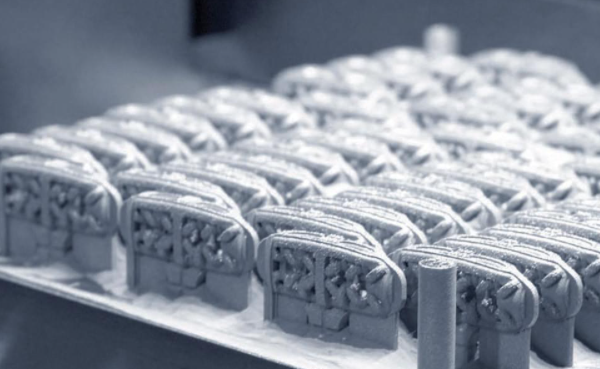
Additive manufacturing implementation requires knowledge that is gleaned from asking smart questions to individuals who are well-informed and experienced with the technology. OMTEC 2019 created a forum for professionals from device companies, contract manufacturers, equipment providers and even FDA to support in-depth group discussions on specific additive topics, from choosing a technology, to design considerations, to quality control.
Discussion facilitators and presenters were optimistic and pragmatic about the use of additive in orthopedics. We review three of their takeaways.
1. Pick the Right Technology for Your Part
Additive manufacturing requires an investment of over one million dollars to bring the capability in house, when you account for one piece of equipment, facility space and expertise. It’s no surprise that companies often choose an additive technology and then stick to it. Each one, such as Direct Metal Laser Melting, Electron Beam Melting, etc., has advantages and disadvantages.
Device companies that work with contract manufacturers may have more flexibility to explore different additive techniques. Companies should consider what they want to accomplish with their design and the ideal process for them (from manufacturing to finishing to cleaning) to determine which technology or technique best suits their next implant, said Jelle ten Kate, Team Lead Additive Manufacturing for FMI Instrumed.
2. Porous Structures Open Your Design Choices
An advantage of additive manufacturing is the ability to create complex geometric shapes, including engineered porous structures. Their design requires a multifaceted approach to ensure that the implant maintains structural integrity, fulfills mechanical requirements and can be cleaned and measured, said Stephan Zeidler, Senior Global & Key Accounts Director Business Development Medical at GE Additive.
As additive software and machines advance, companies will be able to add design freedoms.
“The technology is becoming more ubiquitous, so we’re resolving finer and finer features and the processes are getting more controlled,” said Matthew Shomper, Director of Engineering at Tangible Solutions. “People are amazed when they see exactly what they envisioned in their head as being resolved intentionally on the printer. They start to see what the technology is capable of.”
3. Process Validation Requires You to Thoroughly Map Your Steps
Process validation involves deliberate steps that ensure device quality. The topic raises numerous questions for those using additive, said Louise Karlsson, Application Development Engineer for GE Additive, who moderated a discussion on process validation that was attended by industry and FDA. FDA’s Technical Considerations for Additive Manufactured Medical Devices provides a section on process validation, offering some clarity as to how it should be performed.
Karlsson advised in an OMTEC video that companies map their entire production process, from the raw material to the final product. Execution of these steps allows companies to understand and control their processes and select critical process parameters that need to be controlled in process validation, for instance part placement or orientation.
The key takeaway message, Zeidler said, is that AM is not futuristic—it’s being used today by orthopedic device companies and contract manufacturers.
“If you walked the floor [at OMTEC], you would find a lot of companies using the technology for medical device production,” Zeidler said. “This we can be proud of—all of us.”
CL
Carolyn LaWell is ORTHOWORLD's Chief Content Officer. She joined ORTHOWORLD in 2012 to oversee its editorial and industry education. She previously served in editor roles at B2B magazines and newspapers.




